Many visitors to Sri Lanka fall into the trap of forking out large amounts of money for expensive private transfers. While this may be the quickest and most convenient way to get around, it isn’t necessary at all. Sri Lanka’s relatively developed network of bus and train travel means that the whole island can be covered easily and cheaply by visitors of all budgets. Read on for my tried-and-tested guide to public transport in Sri Lanka!
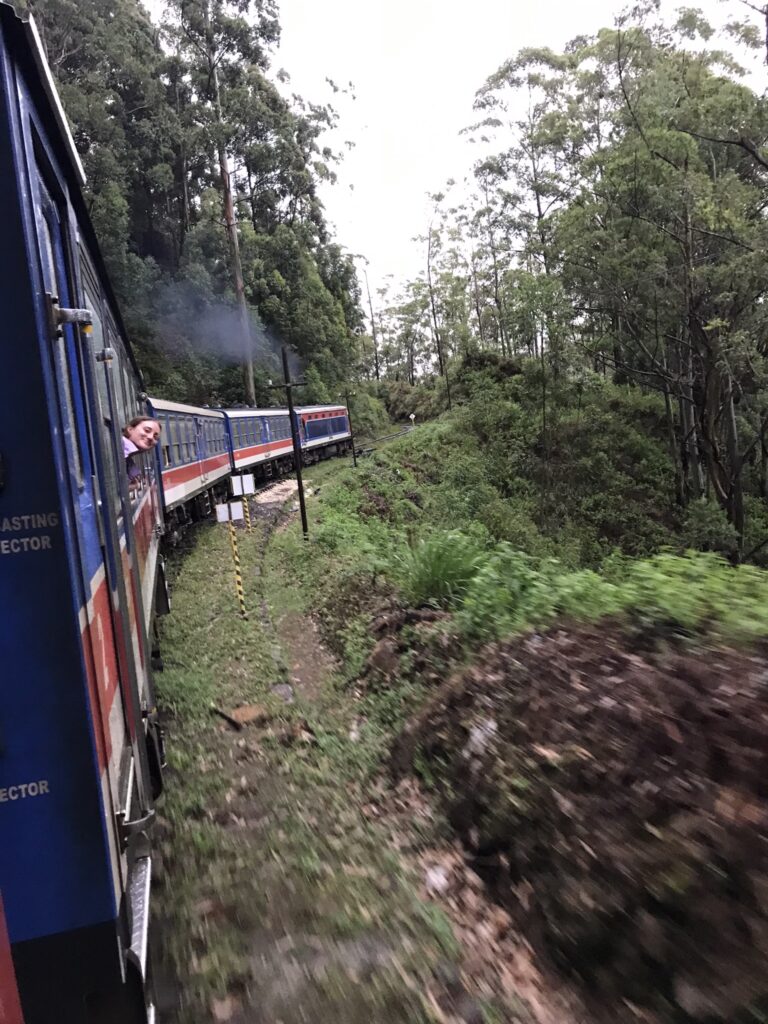
Sri Lanka’s public transportation network consists primarily of buses and trains. We used a combination of both to get around the island. Sri Lanka is one of the few countries in the world where public transport becomes an attraction in itself, as the railway through the highland tea region between Ella and Kandy is considered one of the most scenic routes in the world. Some tourists visit Sri Lanka just to make this train journey, which I must admit is pretty spectacular. Aside from this route, buses were generally our go-to method of transportation.
Buses
Unlike in other South Asian countries, Sri Lanka does not have a network of intercity coaches (at least we didn’t encounter it if so). Instead, bus travel in Sri Lanka is in the form of local public buses, not dissimilar to chicken buses in Central America. There are both air conditioned (AC) and non-AC buses, although we found that the AC buses were a bit of a rarity.
The few AC buses we found were essentially large minibuses, while the non-AC buses are usually a ‘school bus’ style with rigid seats which hold between two or three passengers. There is no official hold for luggage, instead our backpacks were piled up next to the driver at the front of the bus.
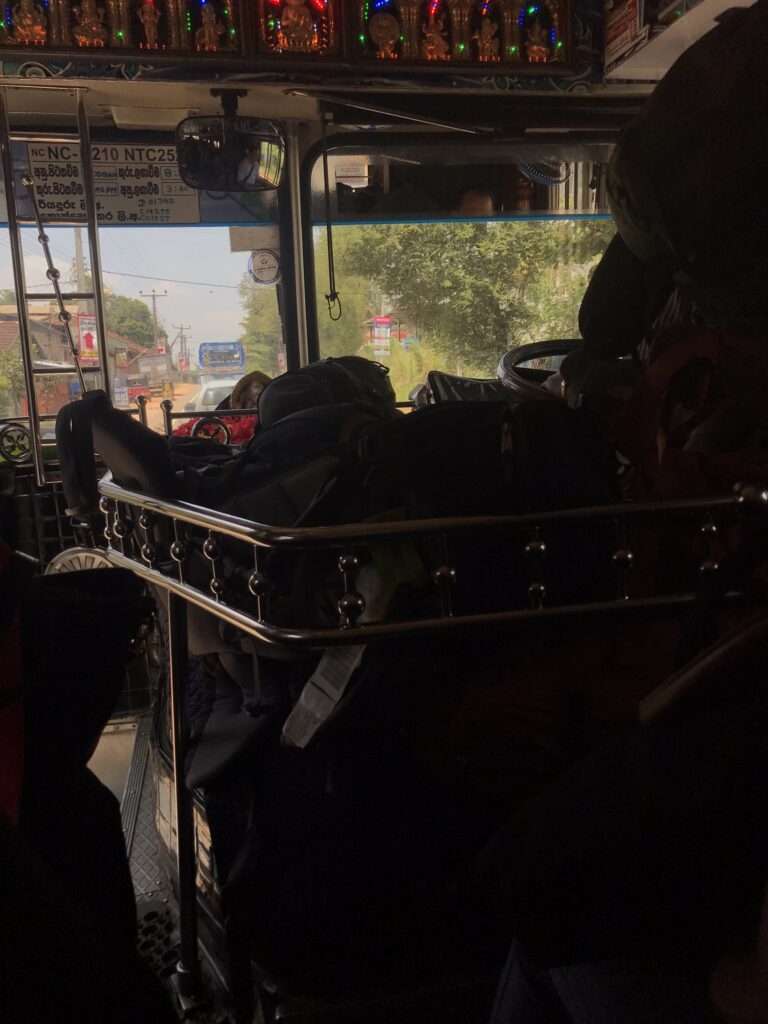
The makeshift luggage hold
The buses are not direct between cities, they stop regularly along the way to pick up local people and at any one time may become overcrowded with schoolchildren, families, teenage students, old ladies traveling to and from the market and so-on. The drivers continue to let people on even when all the seats are taken, often creating a crush of standing passengers.
Conditions on the buses are sometimes a little cramped and uncomfortable even when you have a seat. However I always find riding the bus a rewarding experience as you get to really interact with and speak to local people. We encountered many smiles and friendly greetings from locals on the buses in Sri Lanka. I even helped out a local girl with her English homework on the bus to Anuradhapura.
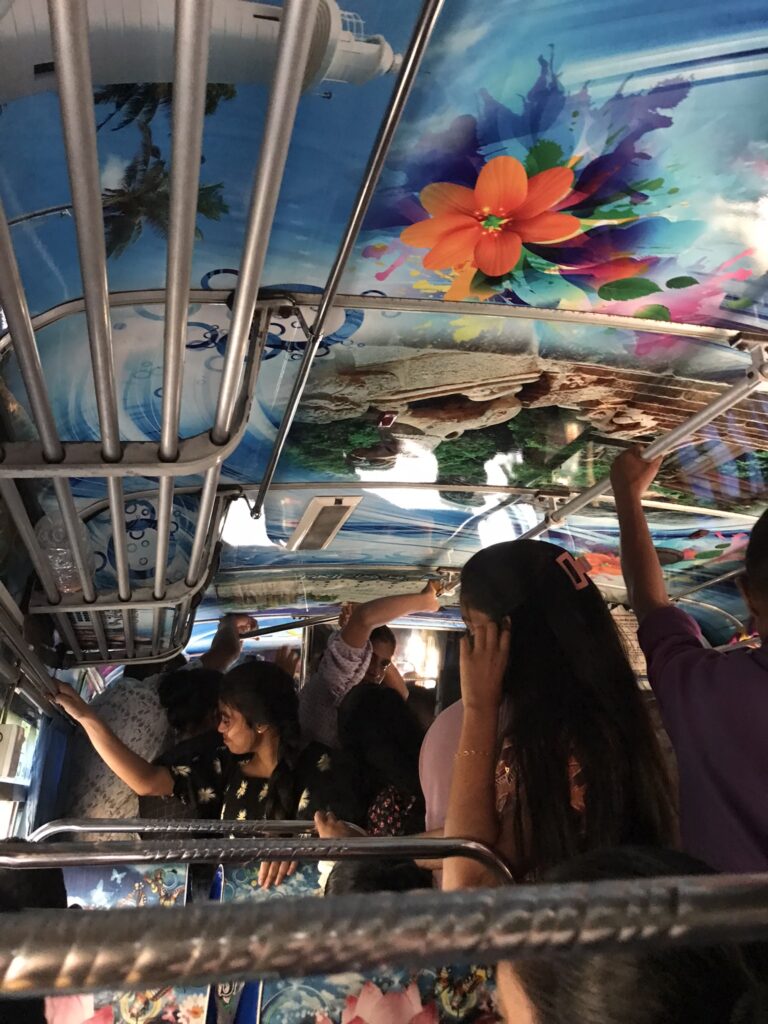
It can get a little crowded sometimes
The best thing about the public buses in Sri Lanka is the price. It’s usually possible to complete an intercity bus journey for the equivalent of around 1-3 US dollars. AC buses are usually slightly more expensive than non-AC buses, but both are extremely cheap. Payment is normally made in cash to the driver or a bus assistant if there is one – it isn’t necessary (and as far as I’m aware it isn’t possible) to purchase tickets in advance.
Buses in Sri Lanka are usually numbered, making it easy to identify the correct bus. The buses in most cities depart from relatively organised bus stations, although as mentioned they also pick up along the road anywhere on the route. When traveling long distances, it may sometimes be necessary to change buses at a central hub. We did this twice and it was very easy and straightforward on both occasions. A friendly policeman even helped us to find the correct bus when we were changing at the station in Kurunegala.
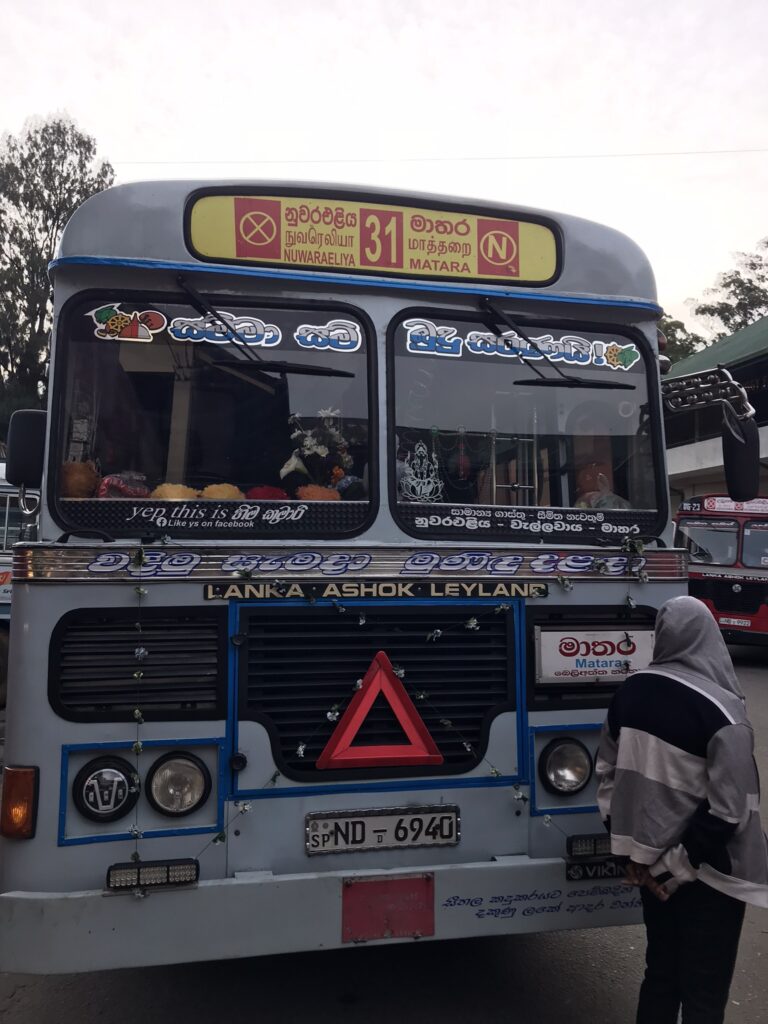
Many buses are numbered, which can make things slightly easier
The majority of local buses run regularly throughout the day, with departures every 30 minutes or so from dawn till dusk. However this isn’t the case for all routes. Timetables can be hard to come by, so the best way to find information for any particular journey is to go to the bus station in advance and ask.
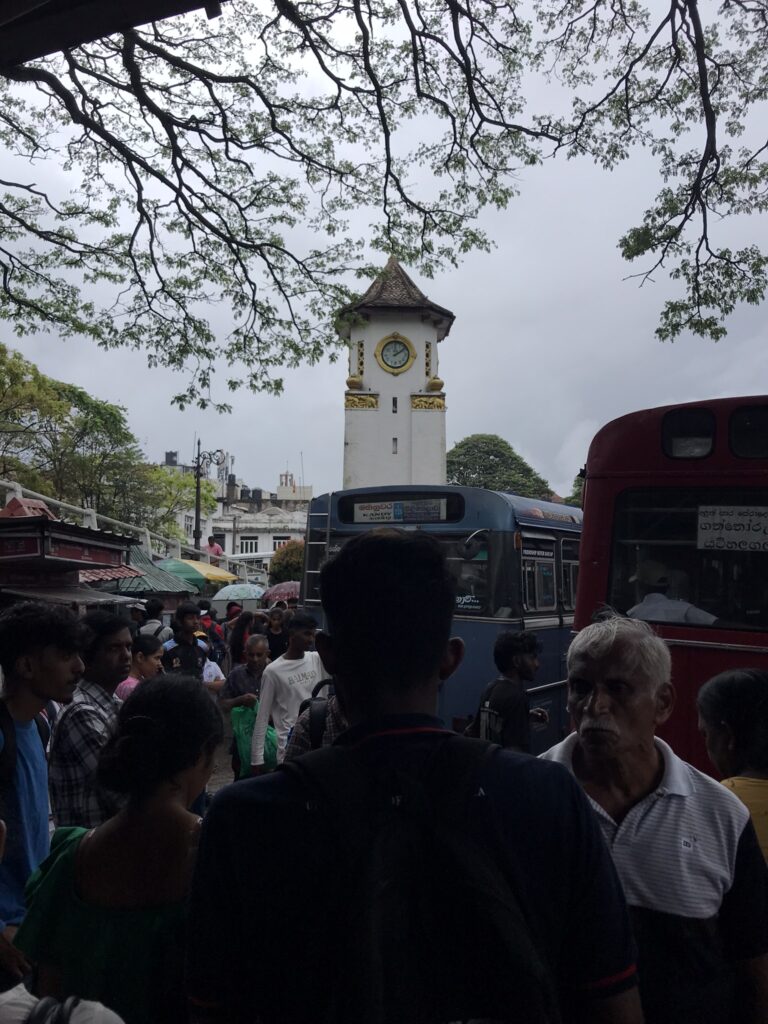
Kandy bus station seemed like one of the more chaotic places in Sri Lanka – luckily we were only dropped off there
We made the following bus journeys in Sri Lanka:
Negombo to Anuradhapura (change at Kurunegala) – We struggled to find a direct bus from Negombo to Anuradhapura, although there is one that departs from Colombo. In the end, we took the 34 bus to Kurunagela which happened to be air-conditioned and cost 490 rupees each. The bus left Negombo bus station at around 10.30am and arrived around 12.30pm. We then took Bus 57 to Anuradhapura departing from Kurunagela bus station at 12.40pm. Unfortunately this bus wasn’t air-conditioned but only cost 393 rupees each. The friendly tourist police were on hand in Kurunegala to assist with finding the correct bay. In the end we arrived at 3:15pm without issue.
Anuradhapura to Dambulla – we took the bus from here in Anuradhapura. There are no buses specifically to Dambulla, however all buses to Kandy will pass through Dambulla and drop off along the main road there.
Dambulla to Sigiriya and back – a quick and easy journey. The bus departs from the main bus stand here in Dambulla and drops off here in Sigiriya. For the return journey, we needed to wait around for a little bit at the bus stop in Sigiriya, a few buses were parked up and there was some confusion as to which would actually be leaving but we followed the locals and made it back with no problems.
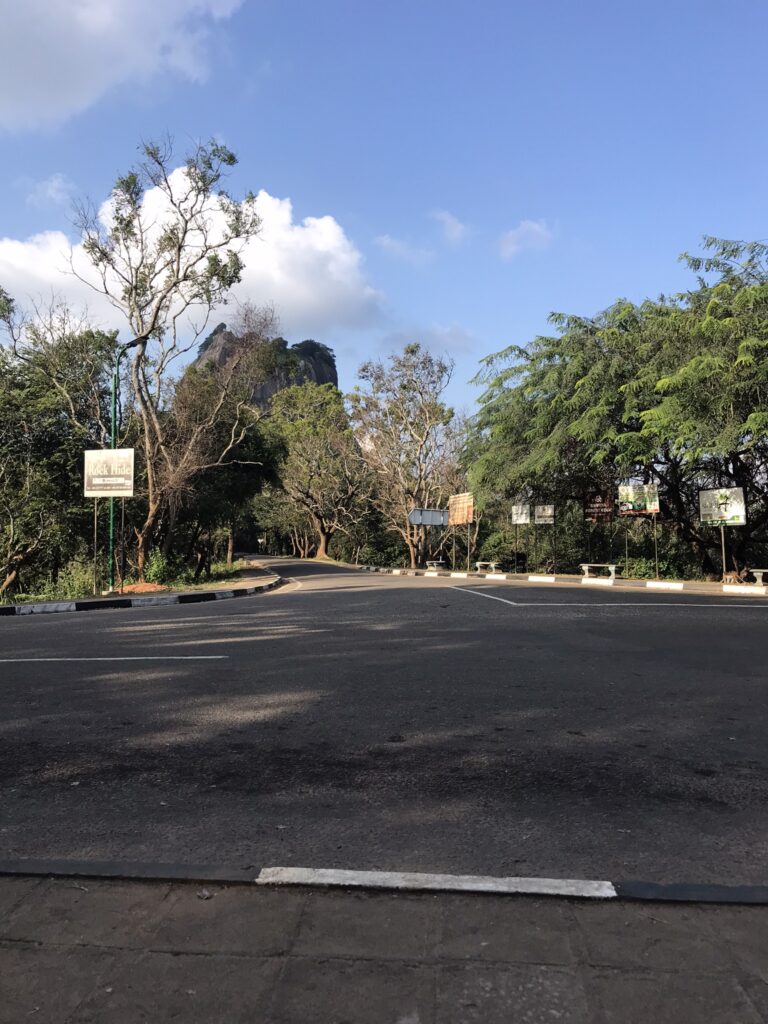
The view from the bus stop in Sigiriya
Dambulla to Kandy – the bus to Kandy picks up from the road outside the main bus stand in Dambulla. Strangely, it doesn’t call in the station so make sure to wait on the road and double check with the driver that the bus is going to Kandy.
Nuwara Eliya to Galle via Matara – a little more difficult. There are very few direct buses from the tea region to the south coast. In the end we were able to get Bus 31 from Nuwara Eliya to Matara. This bus runs only once per day, departing from the main bus stand in Nuwara Eliya at 7am and reaching Matara on the south coast around 2pm. This bus also passed through Ella along the way. From Matara there are frequent buses which depart from the bus station to Galle or any of the other resort towns along the south coastal road.
Trains
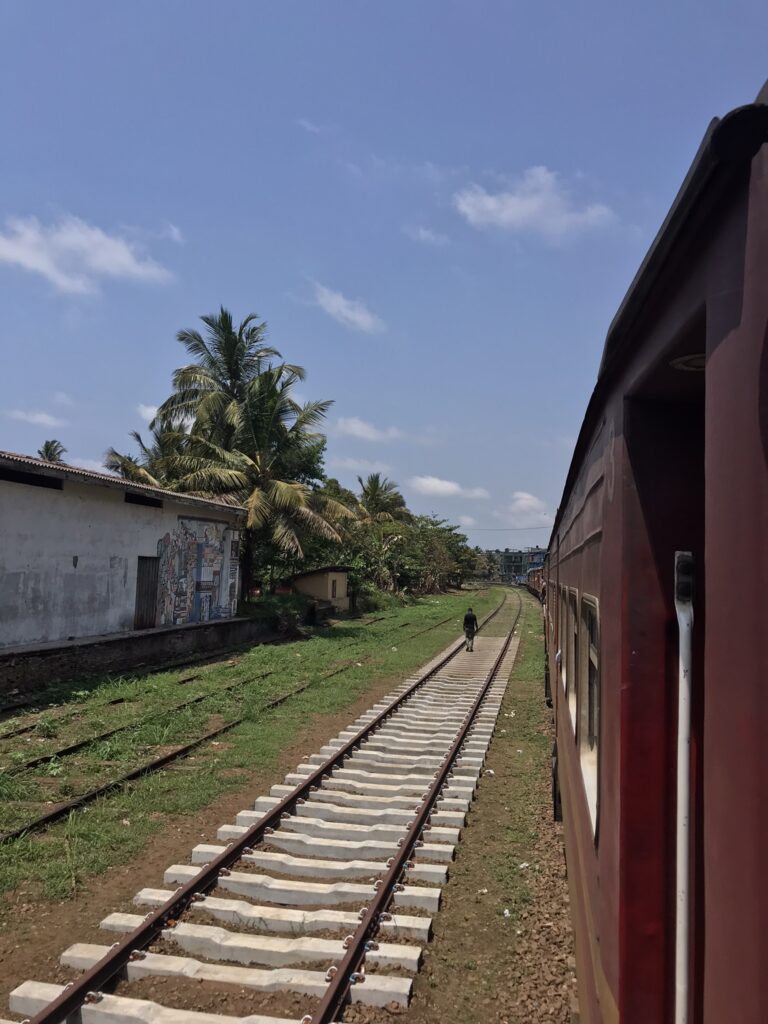
As well as the bus network, railway lines traverse Sri Lanka, linking cities, towns and small settlements – a legacy of the island’s British colonial past. While the rail routes are extensive, we found that the trains were a little unpredictable and often were either very late or not running at all when we visited. For that reason, we favoured getting the bus when possible.
The exception is the famous Kandy-Ella rail route, which is one of the world’s most iconic railway journeys. We took the train on this route twice – using the local train to get from Kandy to Haputale and then the Ella Odyssey tourist train from Haputale back to Nanu Oya (for Nuwara Eliya). We also took the train from Galle to Colombo Fort. This is another great journey as the train dashes along the seafront with idyllic beach views along the way.
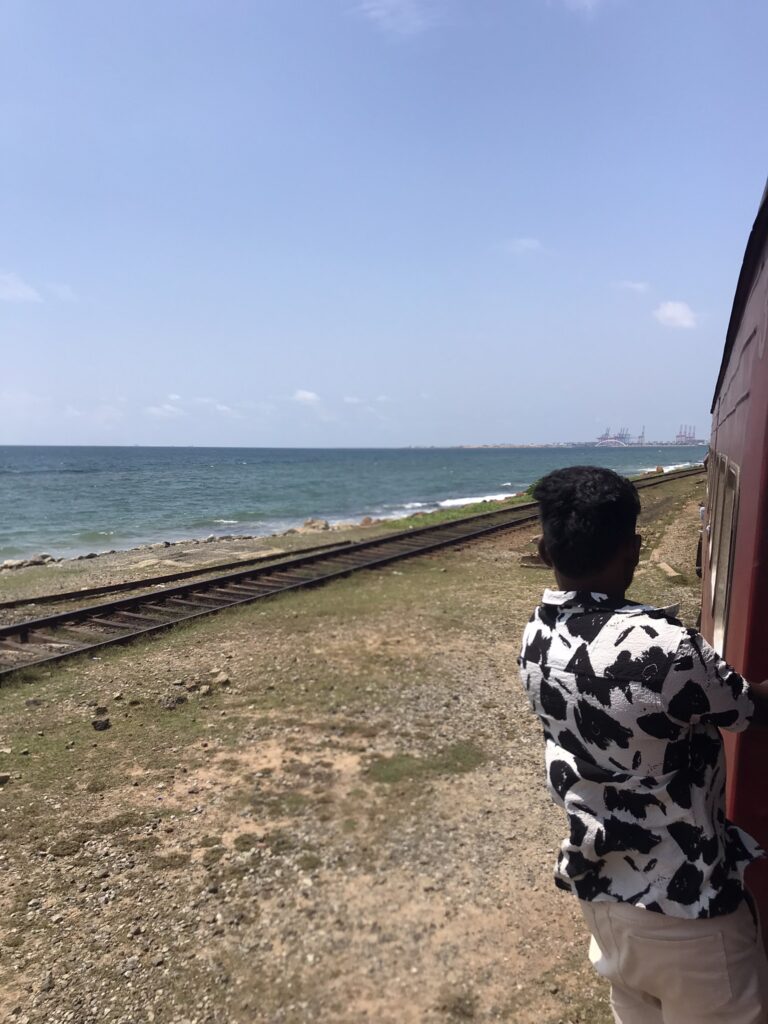
Kandy-Ella may get the headlines but the Galle-Colombo route is not to be sniffed at
The local trains can also be a useful way to get around in Colombo. Trains run from the main stations through the city to various suburbs within the Colombo metro area and beyond. The service is a little bit limited, but this is still an option that we ended up using on a couple of occasions.
Apart from the fact that they were always late, the trains we used in Sri Lanka weren’t bad. They were reasonably clean and in good condition, the stations were well-maintained and the staff we encountered were pretty professional.
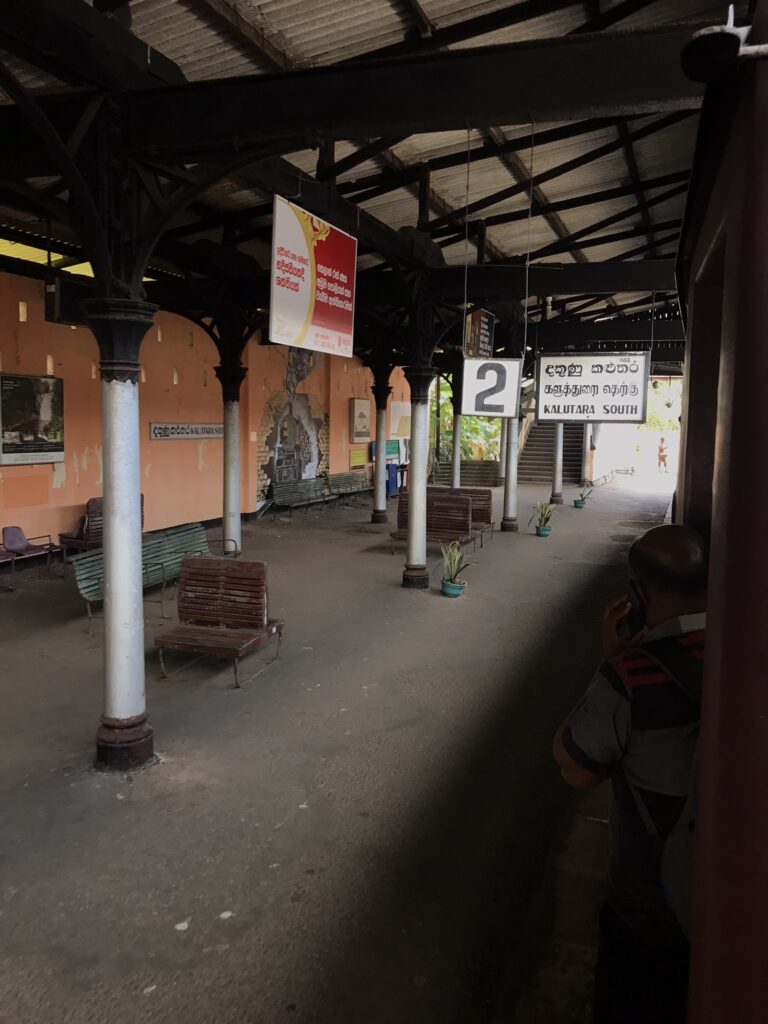
All of the train stations we came across in Sri Lanka were pretty tidy and well-presented
Purchasing tickets
There are several different classes of train in Sri Lanka. Confusingly, the tickets for different classes are often sold from different ticket counters at train stations. You may need to ask around before finding the ticket counter that is selling the ticket that you want.
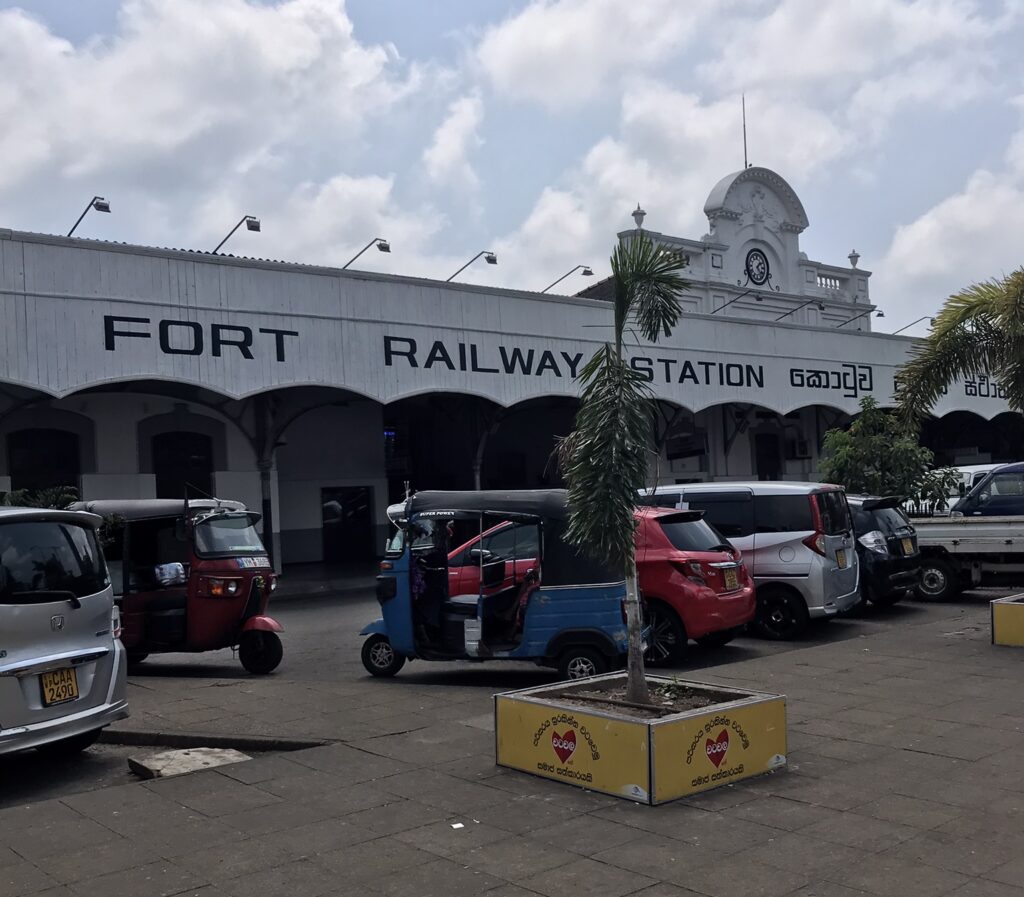
Colombo Fort station – one of the largest in the country with multiple confusing ticket counters
When it comes to rail travel in Sri Lanka, the magic words to save money are ‘third-class unreserved.’ These are the carriages that the majority of local people use. These trains can’t sell out so it’s possible to purchase a ticket on the day or even a few minutes beforehand, although you may end up standing as there are rarely enough seats for all the passengers.
While the trains can be a bit of a free-for-all, the third-class unreserved tickets are much cheaper than the classes with reserved seats. Riding in these carriages can also be a great way to interact with local people. Dan spent most of the journey from Galle to Colombo hanging out of the door and chatting in broken English with a friendly local fisherman, who unexpectedly gave him a sack of about 20 bananas as a gift at the end of the journey.
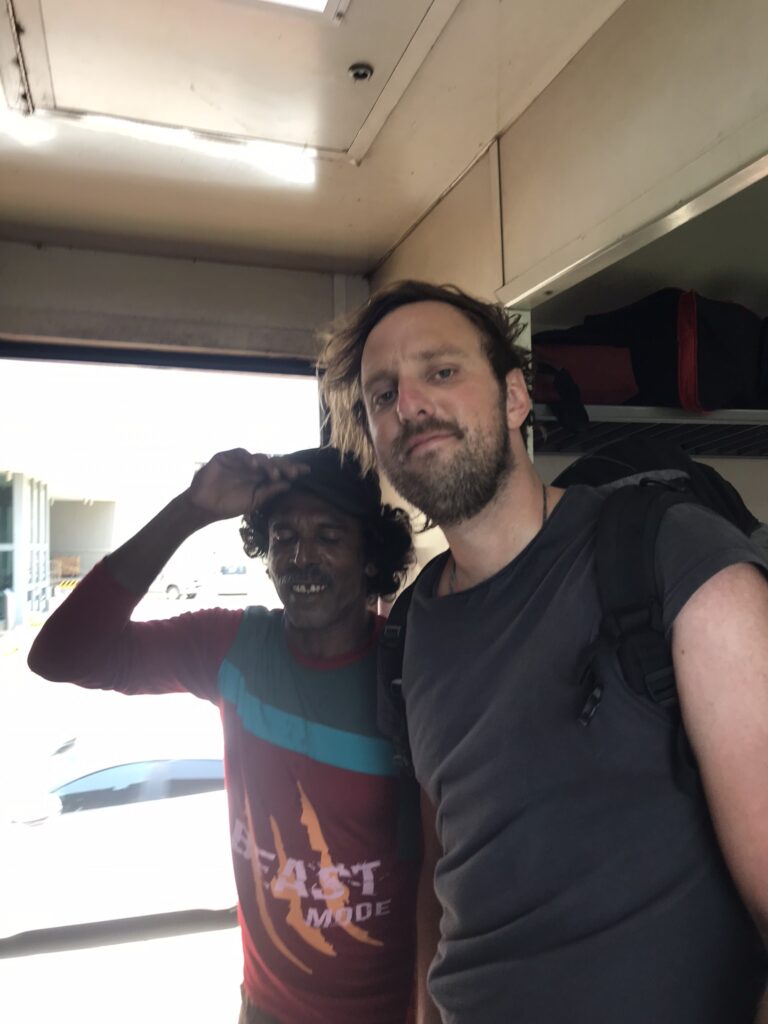
Dan with his new friend
We found it difficult to convince the ticket office staff in Kandy to sell us third-class unreserved tickets. I can understand why foreigners are discouraged from buying these tickets for the Kandy-Ella train as it’s a hugely popular route and there are just not enough seats for everyone. Locals on third-class unreserved trains craftily obtain seats by reaching through the window to place their bags on the seats as soon as the train arrives. This is a great tip if you want to get a seat – it was even recommended to us by a tourist policeman on the platform at Kandy!
If you do want more comfort, the third class reserved tickets are still affordable – they were only about $6 USD for Kandy-Haputale when we took the train. You may also be able to purchase these tickets in person from stations a few days in advance if you want to. The downside is that you can’t move if you don’t like your seat!
Kandy-Ella train
Riding the rails through the tea heartland is an activity in and of itself given the spectacular scenery. A window seat is a must if you can get one, but many passengers hang out of the door for even better views. We took the third-class unreserved local train from Kandy to Haputale and the Ella Odyssey tourist train from Haputale to Nanu Oya. As a result, we were able to experience both the local and the tourist classes of travel on this famous route.
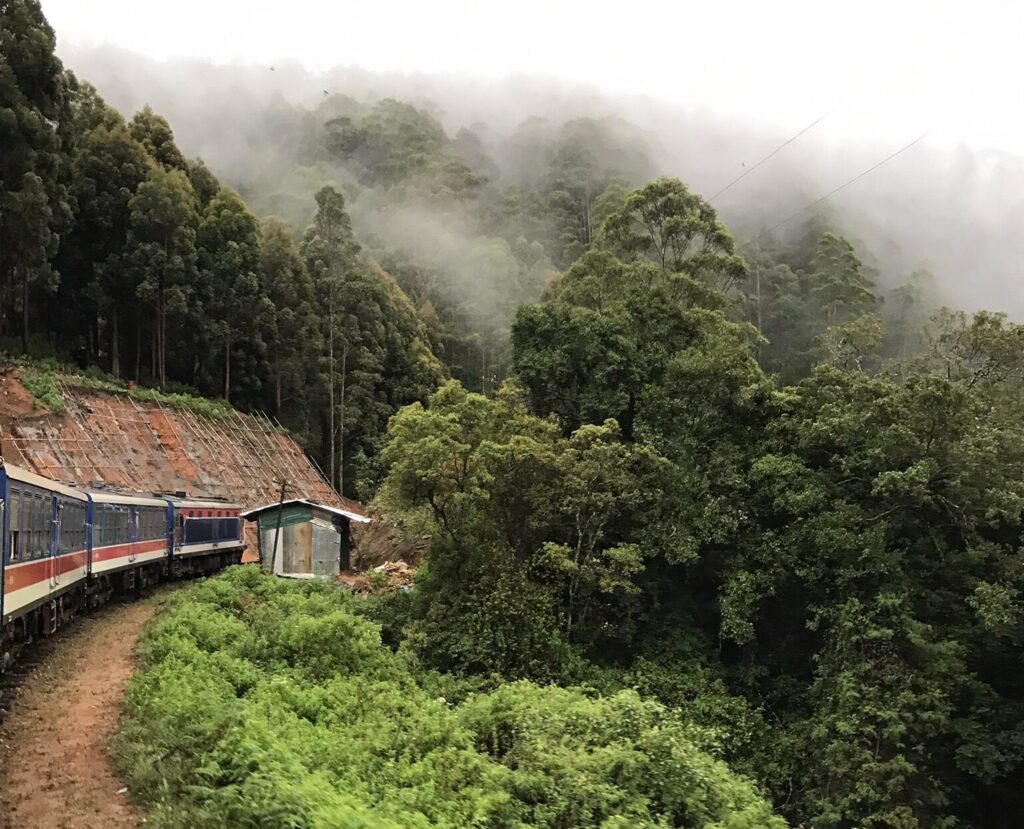
The train journey is worthy of the hype
We were messed around a lot by the ticket office staff when we tried to buy third-class unreserved tickets for Kandy-Haputale and were repeatedly sent to other queues which then turned out to be for reserved seat tickets only. We had to really make it clear that we wanted to buy third-class unreserved and not the grossly expensive tourist tickets. In the end, the third-class unreserved tickets between Kandy and Haputale were just 280 SLR – less than 1 USD, a tiny fraction of the price charged for the tourist train.
The platform in Kandy was heaving with white tourists when we arrived, although most of them boarded the vastly more expensive Ella Odyssey train. We took the local train which departed shortly afterwards along the same route, terminating in Badulla. Surprisingly, most of the carriages in the local train were also reserved seating – only a few coaches in the centre of the train were third-class unreserved.
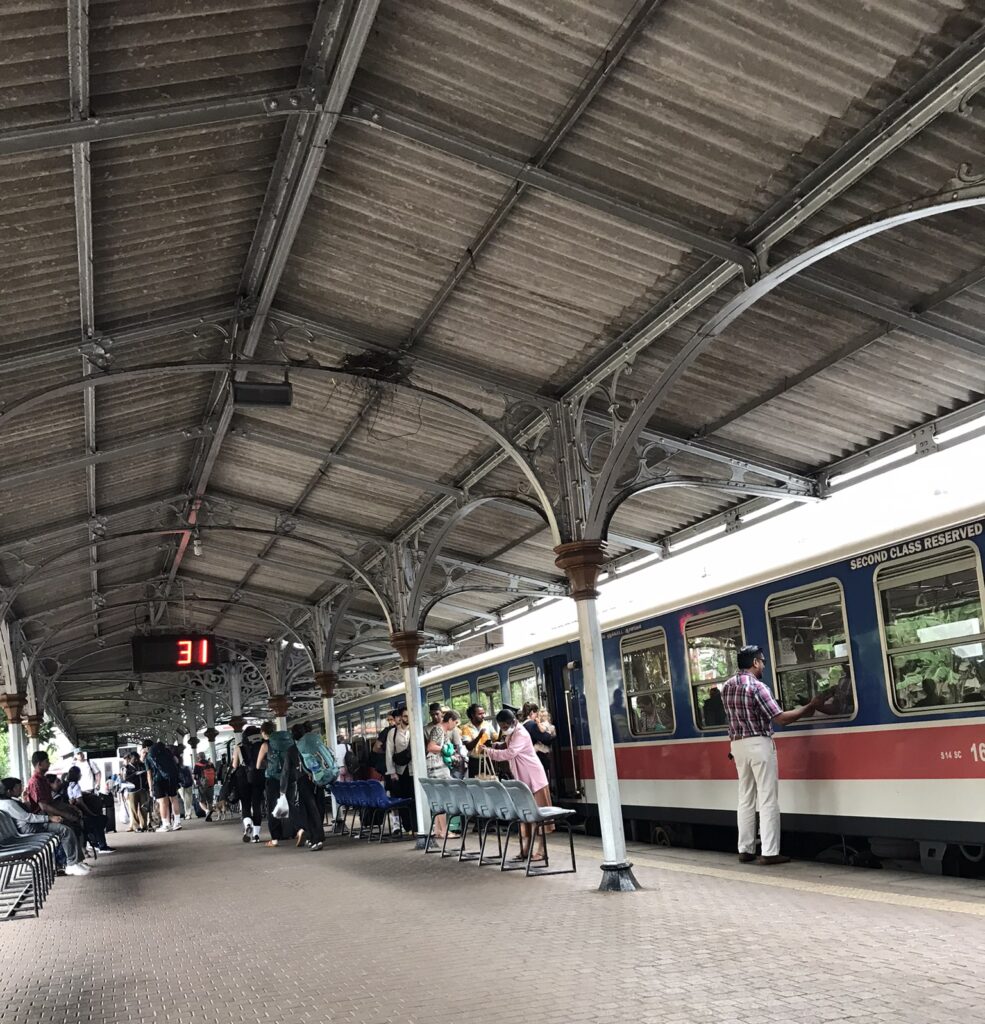
Kandy train station is often full of tourists – this was the non-tourist train
The unreserved carriage was a real scrum at first and was crammed with locals between Kandy and Nawalapitiya station. After that, the carriage emptied significantly and it became very easy to get window seats for the scenic part of the journey (which really begins after Nawalapitiya). Due to the lack of reserved seats, many passengers in third-class unreserved choose to sit or hang out of the doorways – we struggled to take videos from the door of the train at times because of this, however we were still able to take in all of the fantastic views from the windows on both sides of the train.
The Ella Odyssey train that we took (Sunday late afternoon from Haputale to Nanu Oya) was a strange experience. It was returning back to Kandy from Ella (opposite to the direction traveled by most tourists) and it was also getting dark around the time of the journey. As a result, there was almost nobody else on this train. We basically had the entire place to ourselves and were able to enjoy the views, moving from side-to-side and hanging out of the windows at will for the first part of the journey until it got dark.

The weirdly-empty Ella Odyssey train
Apart from the lack of other passengers, I really didn’t notice many differences in the level of service between the Ella Odyssey and the third-class unreserved train. The Ella Odyssey may be a good option if you want a comfortable touristic experience with a reserved seat and are willing to pay a lot more for the pleasure. You can also pre-book a seat online before you even reach the island, which may appeal to those who like to organise things in advance. Definitely don’t book online through a third-party website like Viator or Tripadvisor as you’ll likely be charged horrendous additional fees for no reason at all. It’s much better to go through the official Sri Lankan railway website.
The Ella Odyssey advertises panoramic windows but we didn’t really notice any difference between the windows on the local train, which offered very generous views, and those on the Ella Odyssey which was around 20 times more expensive. Overall I felt that the third-class unreserved ticket was slightly less comfortable, but it’s difficult to complain really considering the massive price difference. We were still able to enjoy all of the fantastic scenic views and have pretty much the same experience as those riding the tourist train.
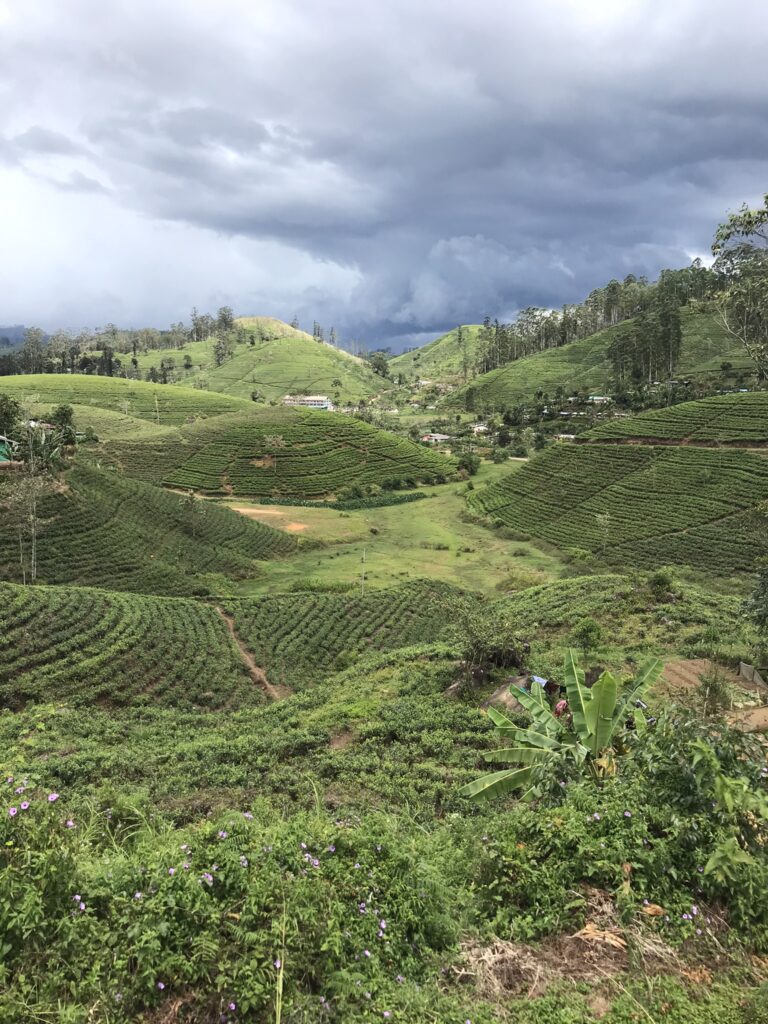
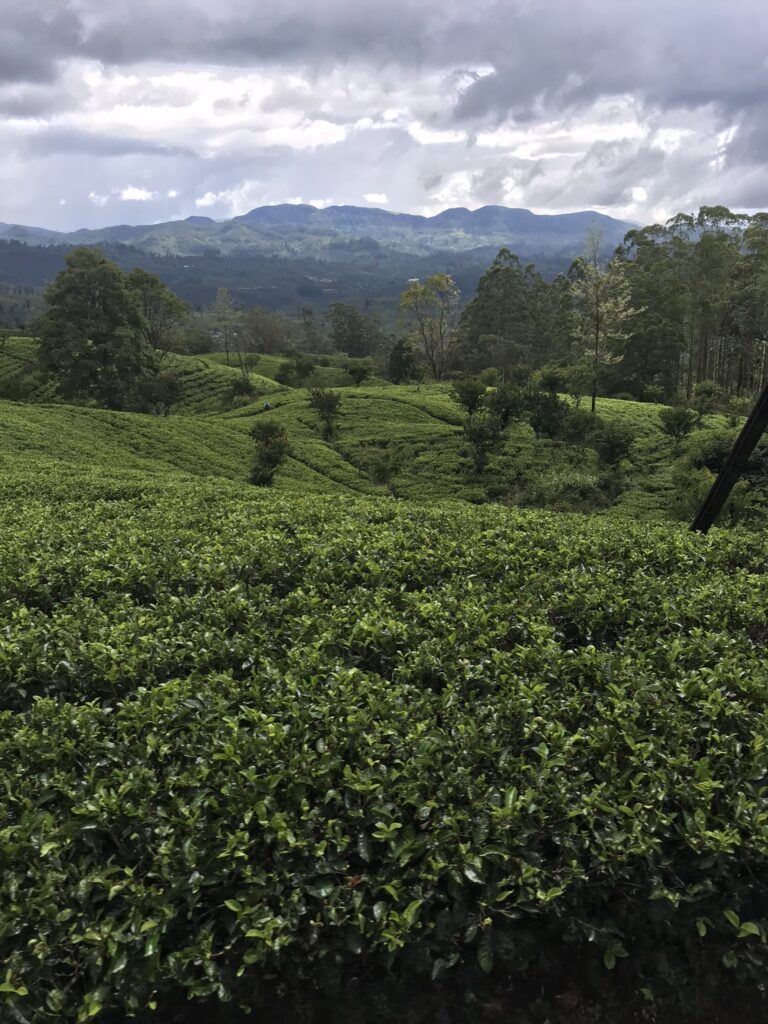
The views from the train are pretty magnificent, third-class unreserved or not
In my opinion, both sides of the train have impressive views, with the right side heading from Kandy towards Badulla probably slightly better (but only just). It’s important to note when traveling to Nuwara Eliya that there is no train station in the city. You will need to disembark at Nanu Oya and then either get a local bus from outside the train station or take a tuktuk to get to Nuwara Eliya.
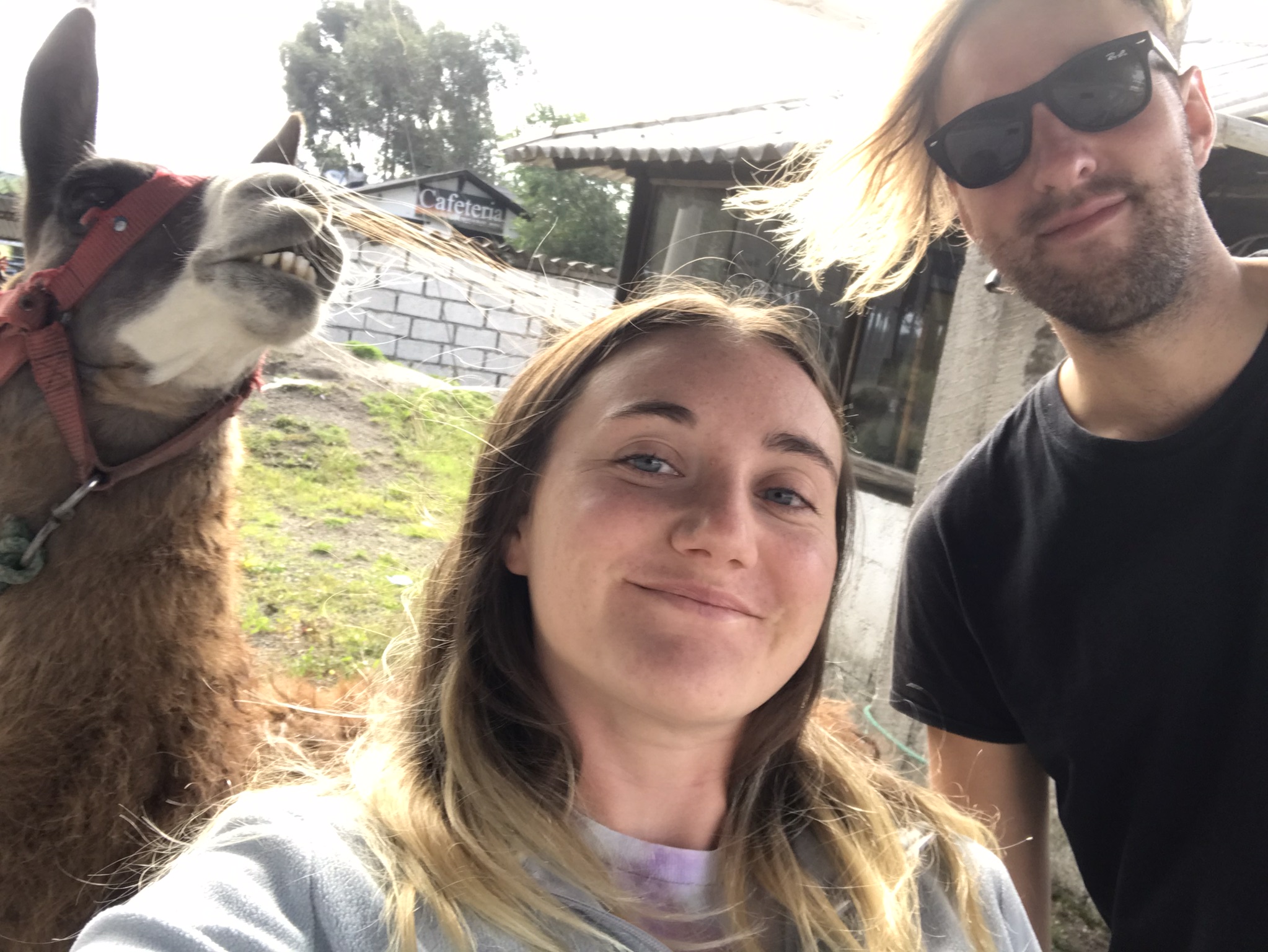
Leave a Reply
You must be logged in to post a comment.